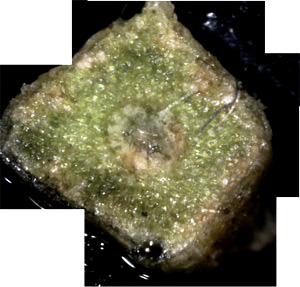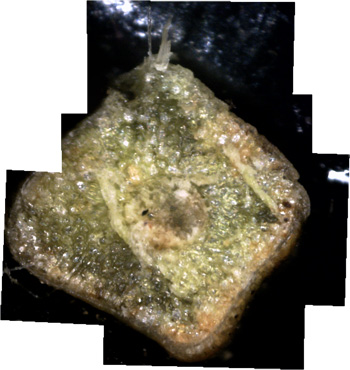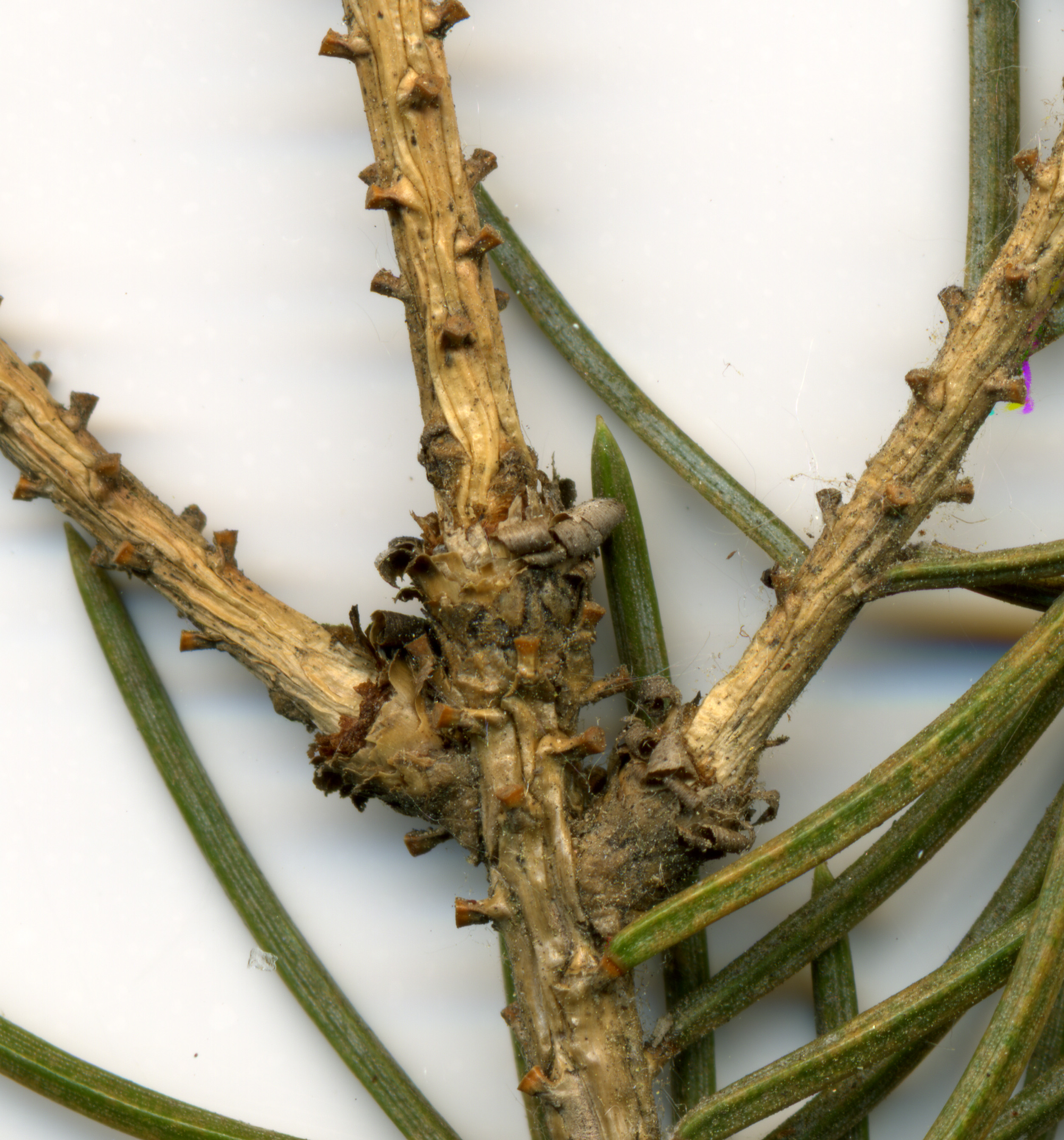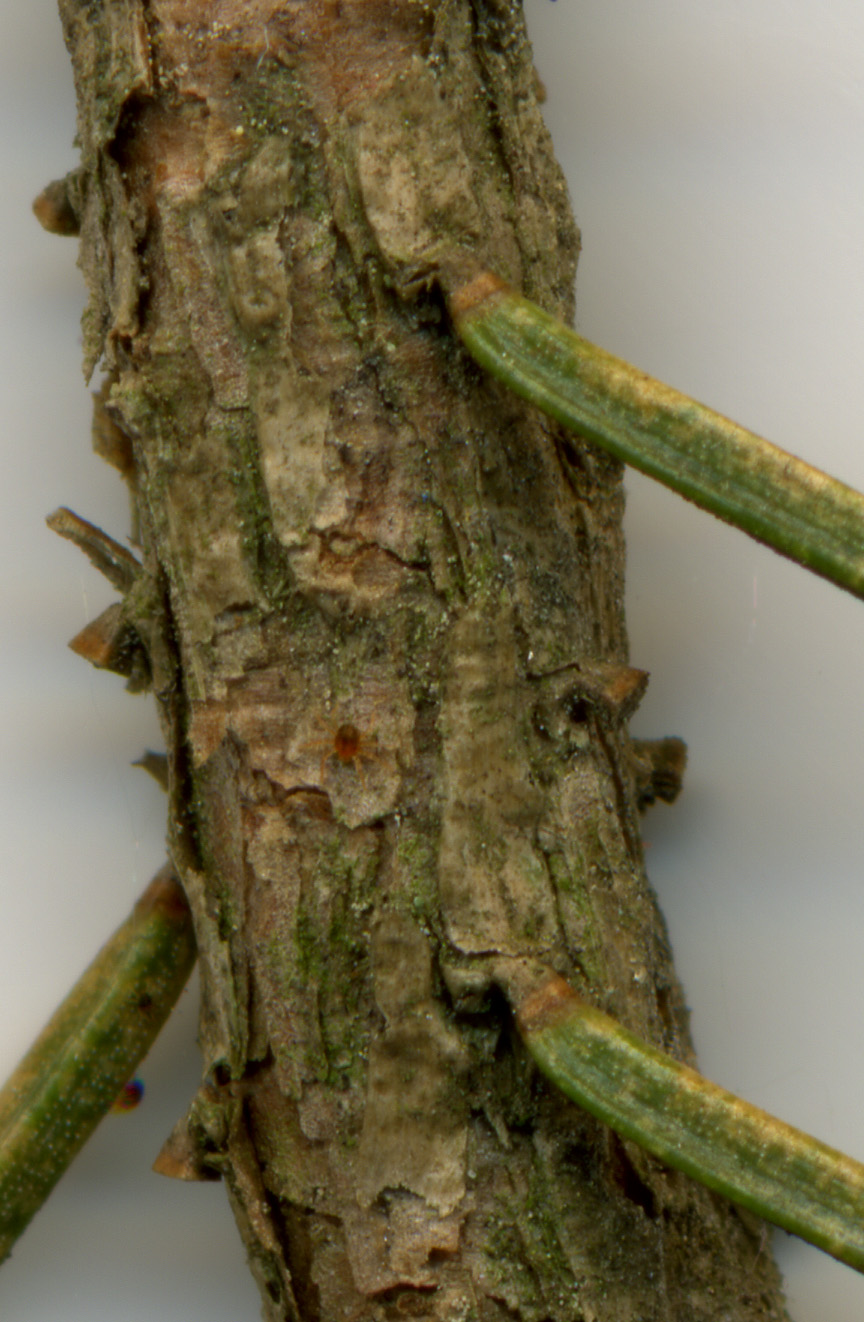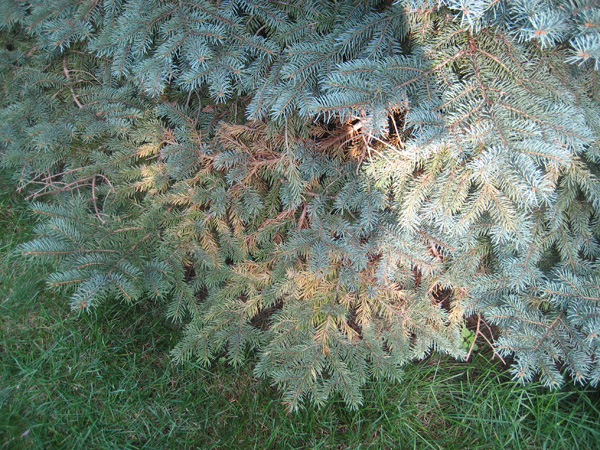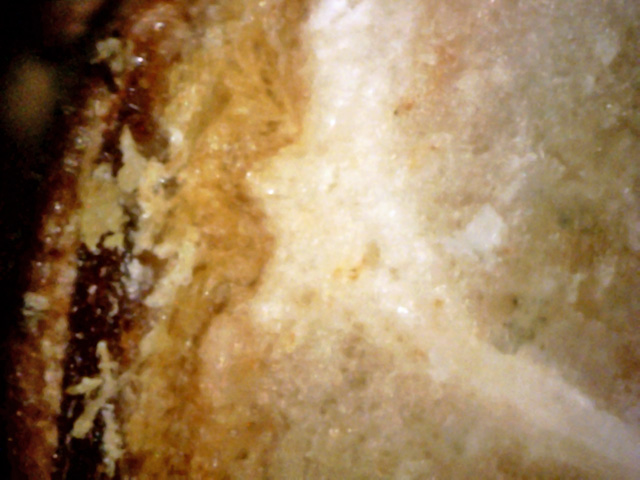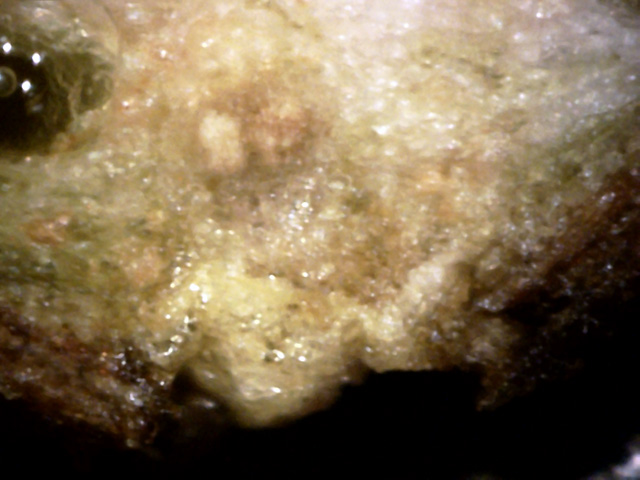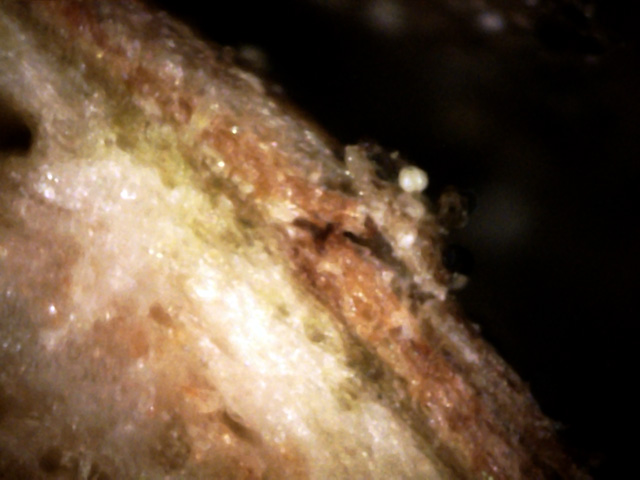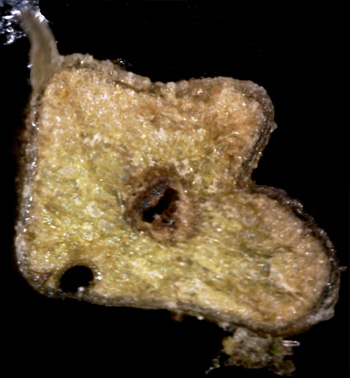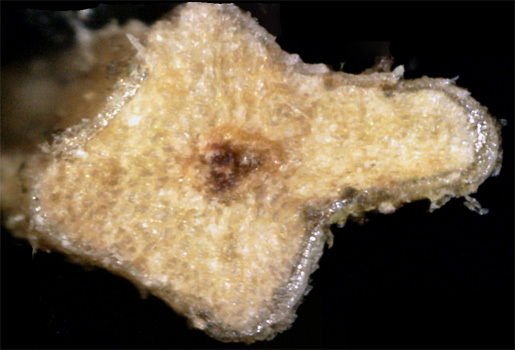This blue spruce was found on the lot of a neighborhood tree several blocks from
my home. The tree was about 30' tall and had seemed healthy for the past 35
years. Yet, a year or two ago, the branches on the lower part of the tree began
sagging and losing needles, which was typical of other blue spruces in the area.
These samples were taken in late May.
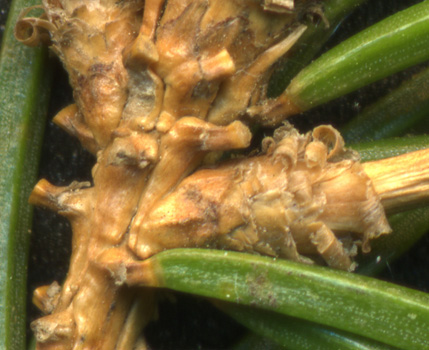
1
This picture shows a generally healthy branch tip with green needles and almost
no spores. (400x).
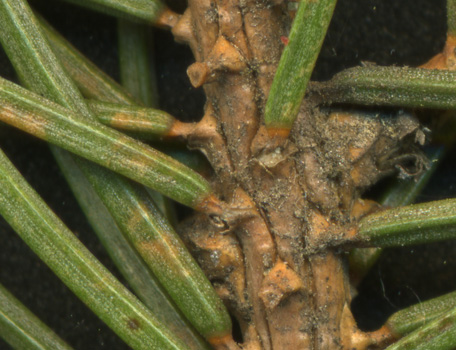
2
Progressing toward the base of this branch about 8", more needles are
starting to lose their color in spots, and the fungal-like growth and spore density increases. (400x).
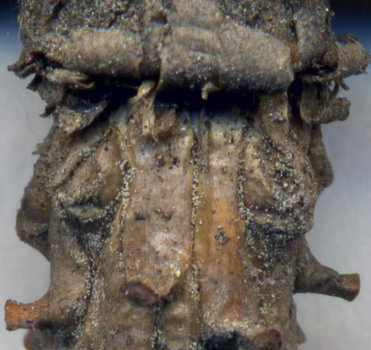
3
Here, about two feet from the branch tip, the side branches have lost about half of their needles,
and the spores have significantly increased in density. (400x)
While the earlier pictures were taken in late May, the following set of pictures
were taken in late September.
At this time the white canker had already reproduced by shedding it's spores.
Hence, there were few spores to be found.
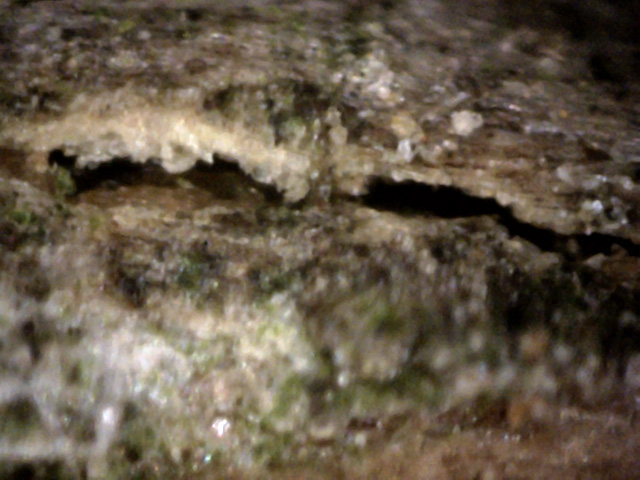
4
Generally, as shown here, the bark surface contained only scattered light patches of white canker. (400x)
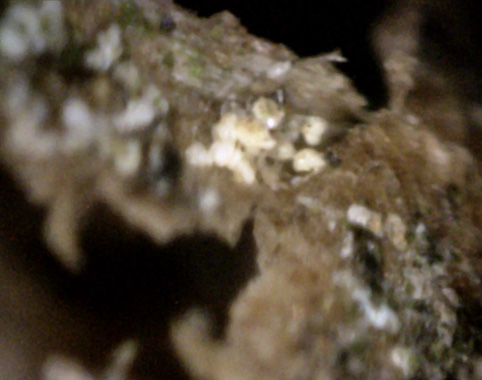 ←
←
↑
←
←
↑
5
Here is one piece of the bark that actually contains white canker spores,
something rarely seen this time of year.
However, these look like old spores, as some seem to have ruptured (yellowish stuff on them).
The interesting part, however, is the hard-to-see full spore structure.
It seems to begin as a yellow oval, change to a white stalk, and then to a brownish-gray tangle
which gives rise to a white spore at the tip. See the red arrows. (400x)
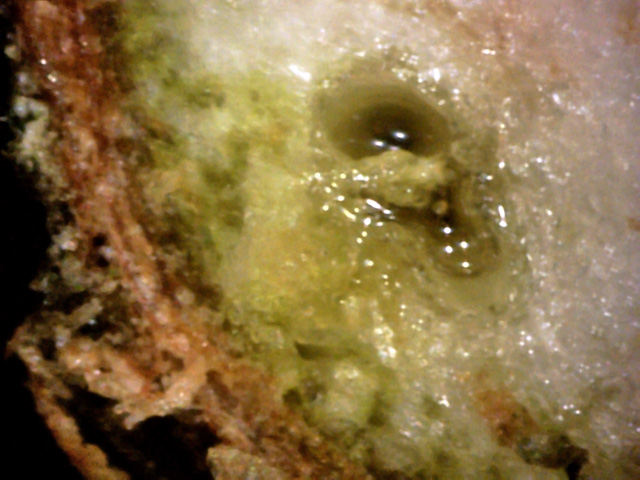 ←
→
→
←
→
→
6
The outer bark here is heavily infested with white canker, which has probably replaced 75% of it.
The phloem is also almost totally consumed by white canker.
This canker has invaded a vessel (red arrow), and two fingers of canker have eaten away an area
under the bark at the bottom (blue arrows). (400x)
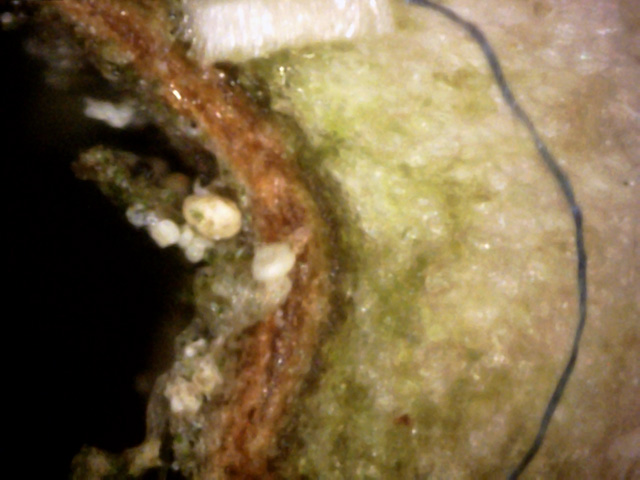
7
While the outer bark isn't in too bad a shape here, the phloem under it has
so much white canker in it that the chlorophyll is almost all gone.
Of even more interest is the collection of white canker spores just outside the bark. (400x)
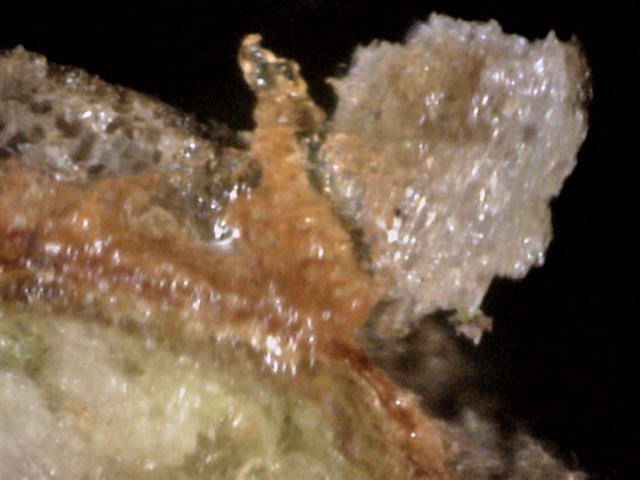
8
This picture could be titled "Canker Galore!", since there is so much white canker
and such a variety of its forms.
Most white canker seems to take the shape of a foam, reminiscent of bubble-wrap.
This may be due to the canker enveloping the plant cells, digesting them, and manufacturing canker food.
When the digestion process starts, the canker is gray.
When it is complete it turns white to transparent. (400x)
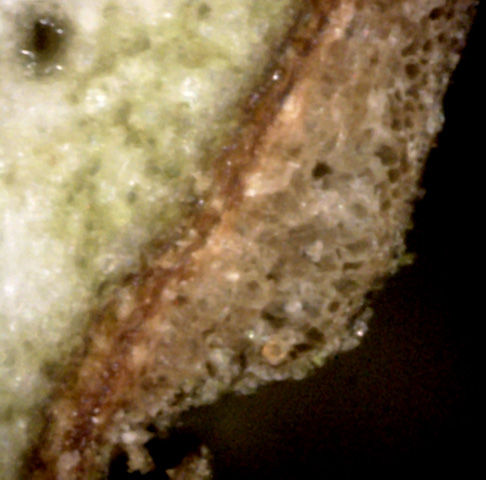
9
This white canker has lodged itself in the bark, making it bulge out.
The phloem underneath it is also riddled with white canker particles. (400x)
